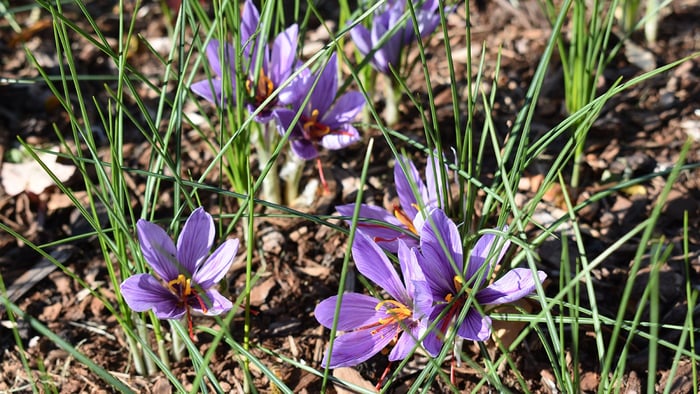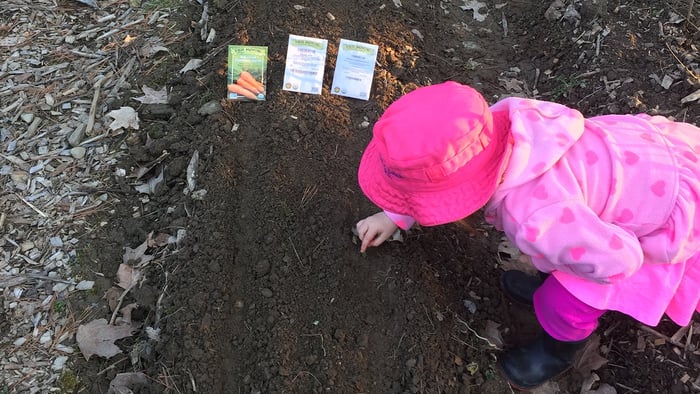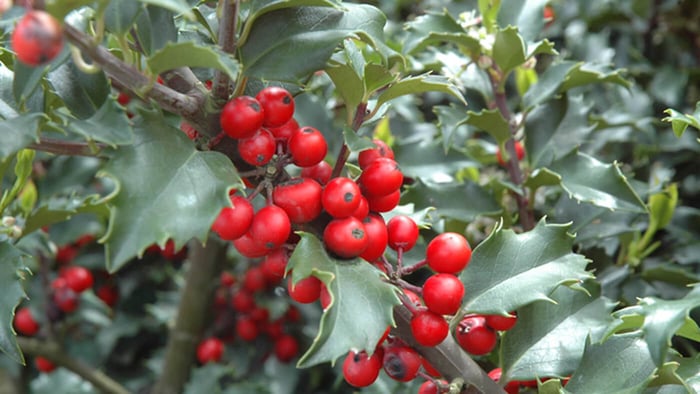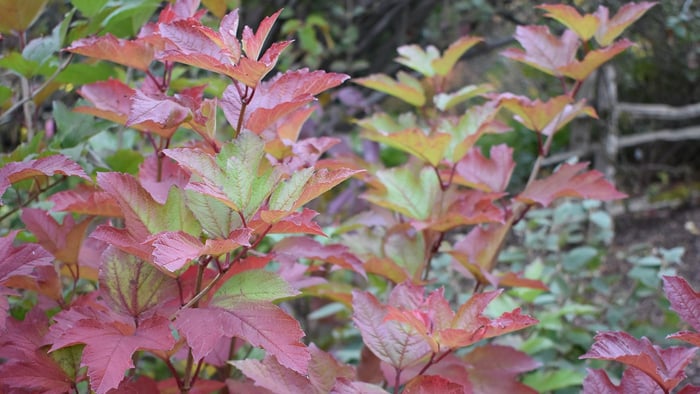
How to Grow Saffron for Spice and Flowers
Listen to article
Audio generated by DropInBlog's Blog Voice AI™ may have slight pronunciation nuances. Learn more
Saffron’s fall-flowering beauty and landscape opportunity should sell itself, but there are far more reasons why saffron should end up in your garden and on your dinner plate. Learn how to grow saffron for spice and flowers.
Culinary Use
Saffron stigmas are the sticky orange-red threads pictured above. They are used globally for culinary cuisines. Saffron contains carotenoids which are powerful antioxidants. Nutritionally, saffron is very high in iron, manganese, copper, potassium, calcium, selenium, zinc, and magnesium. It also contains high mineral sources, such as vitamin A, folic acid, riboflavin, niacin, and vitamin-C.
Saffron in Your Garden
Saffron can grow in a variety of conditions but would do best in a garden bed. This crocus variety is a corm and should be grown like any other bulb such as tulips, daffodils, and hyacinths. They are a hot and dry loving plant and growing saffron can be an easy addition for any gardener, and offers not only landscape beauty but a healthy investment with a delicious return.

Zone Hardiness
Saffron is hardy to zone 4, and has potential in some zone 3 areas. We have had staff that grow saffron in Middlesex, Vermont, as well as the Champlain Valley.
Saffron is hardy to zone 4, and has potential in some zone 3 areas. We have had staff that grow saffron in Middlesex, Vermont, as well as the Champlain Valley.
Corm Information
Each year more saffron corms will multiply from the original corm, producing more flowers each year. After 4-5 years of harvesting, the corms should be relocated, or soils should be amended to replenish fertility.
Each year more saffron corms will multiply from the original corm, producing more flowers each year. After 4-5 years of harvesting, the corms should be relocated, or soils should be amended to replenish fertility.
Soil Conditions
Saffron can tolerate a variety of soil pH (6-8), and prefers a dry, well-drained, full sun location. Saffron seems to enjoy fertilizer so don’t forget to add some compost to your planting to help improve daughter corm and flower development. We have had staff that grow saffron in heavier Addison County soils with success. If planting in a raised bed, we recommend planting in one that isn't too high off the ground so roots are insulated over the winter.
Saffron can tolerate a variety of soil pH (6-8), and prefers a dry, well-drained, full sun location. Saffron seems to enjoy fertilizer so don’t forget to add some compost to your planting to help improve daughter corm and flower development. We have had staff that grow saffron in heavier Addison County soils with success. If planting in a raised bed, we recommend planting in one that isn't too high off the ground so roots are insulated over the winter.
Planting Instructions
Plant your saffron corms as soon as you receive them in late summer/early fall. Plant 4-6 inches deep, and 4-6 inches apart. Mulch and plant corms deep enough into the soil to prevent frost exposure. Thoroughly water in your corms, and wait until you see growth above ground before you start watering them regularly. They should be watered during extreme drought or prolonged dry periods. They will flower first during late October/early November, and remain vegetative through the entire winter. They will keep their green, pine-needle like foliage until May or June, when they will dry back and remain dormant until the fall. During dormancy they should not be watered. Natural rain or snow events shouldn’t be a problem.
Plant your saffron corms as soon as you receive them in late summer/early fall. Plant 4-6 inches deep, and 4-6 inches apart. Mulch and plant corms deep enough into the soil to prevent frost exposure. Thoroughly water in your corms, and wait until you see growth above ground before you start watering them regularly. They should be watered during extreme drought or prolonged dry periods. They will flower first during late October/early November, and remain vegetative through the entire winter. They will keep their green, pine-needle like foliage until May or June, when they will dry back and remain dormant until the fall. During dormancy they should not be watered. Natural rain or snow events shouldn’t be a problem.
How to Harvest Saffron
Saffron stigmas should be collected once the flower reaches full maturity, then dried and cured for the best culinary appeal and health benefits. Drying should take place for several days in a cool, wind-free area, and jarred, and cured over the course of a few weeks.
Many pick the whole flower when harvesting. If you have time and are patient, we recommend picking only the red stigmas. This leaves the yellow, pollen-loaded stamen for pollinators during the late fall when pollen sources are becoming more scarce. Plus, the purple flowers will remain in your garden to admire.
Warning: Rodents
Because this plant grows when no other plants are growing, it is a very welcoming food source for moles and voles during March and April especially. Please be cautious of rabbits and rodents when siting your plants. If planting in raised beds, install hardware cloth to help ensure your saffron remains yours and not your garden pests’.




